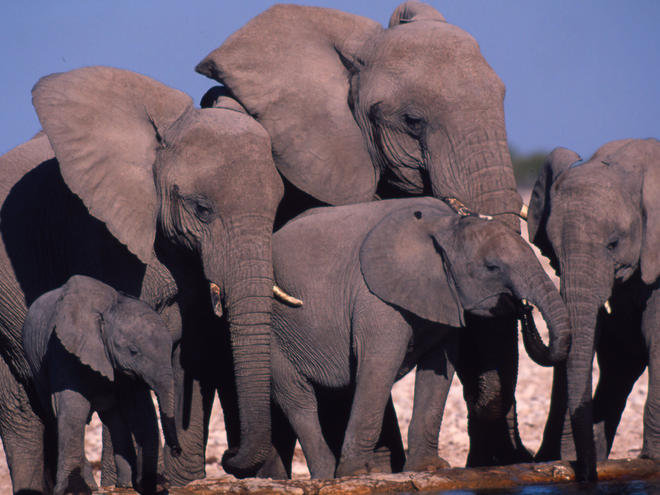The only way to stop climate change now may be revolution
 |
| AP Photo/Peter Dejong |
Time
Last year, a researcher presented a paper on climate change at the American Geophysical Union’s meeting entitled ”Is Earth F**ked?” which advocated “environmental direct action, resistance taken from outside the dominant culture, as in protests, blockades and sabotage by indigenous peoples, workers, anarchists and other activist groups.”
+
Last month, the Philippines climate commissioner and self-styled revolutionary Naderev “Yeb” Saño held a 13-day fast in the midst of an international climate summit, just hours after Typhoon Haiyan ravaged his home country. In a tearful speech quoting Gandhi, he said: “We cannot sit and stay helpless staring at this international climate stalemate. It is now time to take action. We need an emergency climate pathway.”
+
And only last week, a conference of climate scientists in London explored the theme of “radical emissions reduction” after noting that “nothing that we’ve said or done to date about climate change has made any detectable dip whatsoever”. Via a weblink, author Naomi Klein compared the fight against climate change with the struggle against South African apartheid, and said, “an agenda capable of delivering radical emissions reductions will only advance if accompanied by a radical movement.”
+
Fed up with slow (or in some cases, backwards) progress on climate change, environmental advocates are mulling desperate measures. Emerging at the head of this pack is arguably the world’s most prominent climate scientist: James Hansen, a former NASA researcher turned activist.
+
In a provocative study published earlier this month, Hansen and a group of colleagues make the case for why radical action is needed. The now commonly embraced international target of keeping global warming at a maximum of 2°Cabove pre-industrial levels—a hard-won, but politically negotiated goal—is actually much too high, Hansen says, and we should instead aim for 1°C. That would be barely a blip higher than current levels of global warming (around 0.8°C), but still the highest level ever experienced over the 10,000-year course of human civilization. ”Our objective is to define what the science indicates is needed, not to assess political feasibility,” the paper says.
+
Why 1°C is the danger level
Hansen’s main point is simple: If the Earth hasn’t experienced temperatures warmer than 1°C as a result of natural climate variability for at least the last 100,000 years, that’s probably about where we should draw our human-caused global warming line-in-the-sand. Beyond that point, things start to unravel pretty quickly. Environmentalists have dubbed this acceleration of warming “the wheelchair curve“:
+

Because the world is going to end up in a wheelchair if this happens.Jos Hagelaars/Max Edkins/World Bank
As warming crosses 1°C, Hansen and his colleagues’ research shows that additional heat is stored mostly in the deep ocean, where it can remain locked away for hundreds or thousands of years. (Water circulates very slowly down there). That essentially locks in further climate change, even if emissions are drastically reduced later on, because that circulating water will continually replenish the surface with relative warmth from below. Additional warming will also begin to trigger feedbacks (melting permafrost, thawing methane) that will unleash additional greenhouse gases and drive further warming.
+
As warming approaches 2°C, it locks in an additional 10-20 meters of sea level rise over the next few hundred years—enough to flood every coastal city in the world. Ecosystem collapse would be virtually assured, as plants and animals that have evolved into precise niches over hundreds of thousands of years are forced to adapt to new conditions in just a decade or two. Even assuming we eventually stop emitting CO2 completely, reaching 2°C could, the study shows, mean we remain above 1°C for hundreds of years or more.
+
And if warming goes over 2°C, Hansen and his colleagues present a familiar litany of climate impacts: mass extinctions, stronger storms, and increasingly severe effects for human health, along with “major dislocations for civilization.”
+
The study’s key takeaway is that unless CO2 emissions peak right about now—which they are clearly not doing—in just a few more years we will lock in a 2°C rather than a 1°C temperature rise. That will set climate impacts in motion for the next thousand years or so, barring advances in technology that are currently largely discredited as either too expensive or too impractical on the scale necessary to reverse the warming that’s already baked into the system.
+
Why emissions need to start falling now
As we reported recently, the UN has endorsed a carbon “budget”—a maximum of one trillion tonnes of carbon emitted into the atmosphere to keep warming below 2°C. To stay below 1°C, Hansen et al argue that the world can burn only half this amount.
+
To achieve this, they say, global CO2 emissions would need to peak immediately and decline three times faster than the rate currently being discussed for inclusion into the next global climate treaty—a 90% reduction by 2030. The current UN plan (dotted line in the chart on the left below) won’t even be implemented until 2020 at the earliest. Even if by some miracle Hansen’s plan (the solid line in the chart on the left) took effect this week, he says we’d still have only a 50/50 shot at staying under 1°C.
+

How different rates of emissions reduction will affect CO2 levels.J. Hansen et al/PLOS One
But the cost of waiting is enormous. If global CO2 peaks in 2013—that is, sometime in the next week or so—followed by drastic reductions, we’re still locked in to climate change of 1°C or so until about 2100. If we delay this peak until 2030 (the green line in the chart on the right above), Hansen projects extensive climate-change impacts will continue for a further two centuries. If we delay until 2050 (the red line), dangerous climate change will be locked in until past the year 3000.
+
Basically, if we wait even a few years to implement anything less than a fossil-fuel starvation diet, momentum already built into the system nearly guarantees the climate is toast. To quote the study:
+
The inertia of energy system infrastructure, (i.e., the time required to replace fossil fuel energy systems) will make it exceedingly difficult to avoid a level of CO2 that would have highly undesirable consequences.+
Why revolution is the only way
Hansen and his associates admonish the environmental community for doing the same things over and over again—advocating for renewable energy, recycling, and hybrid cars—and expecting different results. The change that is produced in this way is much, much too slow, they say. Their study concludes with what can only be characterized as a call to arms: a global challenge akin to the anti-slavery and civil rights movements, begging the world’s young people to disrupt their governments and demand immediate action on climate change.
+
In short, we’re talkin’ ’bout a revolution—or in the words of the paper, “a human ‘tipping point’.”
+
Are there no other options? Hansen and his co-authors argue there is a sliver of hope the world could stay near a 1°C goal if there were a bilateral agreement between the US and China—the world’s two biggest carbon emitters. Such a deal would need to immediately implement a gradually escalating carbon tax, rebate the revenue to its citizens equally per person, and place trade duties on any other country not willing to join in. That could quickly shift the world to a low-carbon economy, perhaps with enough cushion to prevent the most dangerous aspects of climate change. However, the authors dismiss this possibility as extremely unlikely.
+
Another possible silver bullet, trusting technology to zap climate change via geoengineering (like sucking carbon dioxide directly from the air) is also a non-starter. Hansen et al calculate that the cost of immediately implementing free-air carbon capture, an unproven technology at large scale, would be around $50 trillion, though they admit that cost could come down a bit with future advances.
+
In Hansen’s view, young people have the best reason to fight the system. He has said he quit his job at NASA so he could more fully embrace climate activism, including a plan to sue the government on behalf of younger generations for failing to act on climate change in time. (At least in the United States, trying to sue corporations would probably fail). He explained his strategy of helping youth fight climate change through the court system in a recent op-ed for CNN.
+
And indeed, the US military already seems to be preparing for climate-induced mass protests, the Guardian reported in June, based on documents leaked by NSA whistleblower Edward Snowden.
+
But as with all revolutions, the fight for the climate will need a catalyst. It’s unclear what that might be, especially when the very consumption culture that forms the bedrock of the present-day economic system is so ubiquitous—and also at the root of the climate problem itself. Young people growing up now contemplating their futures may have the biggest reason for alarm, but with a problem like climate change that feels complex, distant and abstract, it may be hard to make the urgency that Hansen expresses resonate broadly.
+
And even if a “human tipping point” comes—an Arab Spring for the climate—will it sustain its momentum or, like most of the recent uprisings, burn out or collapse into factional bickering?

